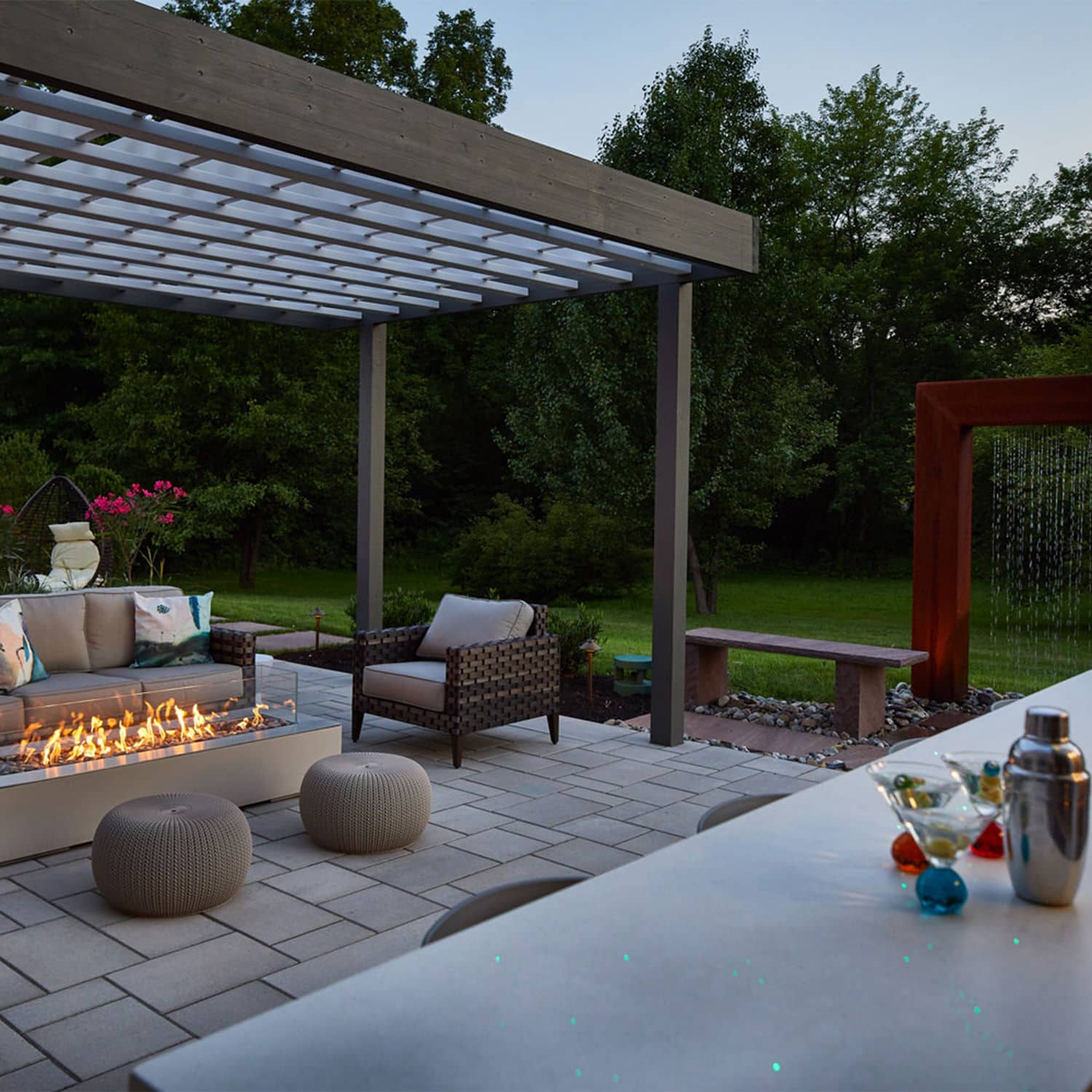Does a Black Walnut tree have any friends?
Posted May 16, 2019 in Plant and Tree
That may seem like a silly question to most, but for homeowners who have black walnut trees on their property, it is actually a very valid question! Let us explain.
Black walnut trees, juglans nigra, are considered one of the most valuable native hardwood lumber trees and are often implemented in large-scale landscapes and acreages because of their aesthetic majestic presence. This tree does produce edible nuts, which have a rich and tangy flavor that can be easily harvested when the outer husk softens but remain green.
I know what you’re thinking – beautiful. large, majestic, shade and food producing, why wouldn’t it have any friends? Well, to get right to it, the black walnut produces a natural chemical called juglone that exists in every nook and cranny of its being which directly affects nearby plantings. This chemical affects nearby plantings so much that they die! To a homeowner, it is truly a shame to see lovely landscaping struggle and expire, especially if the same fortune exists for future plant replacements!
The production of juglone has been found to be a protective response by the plant to ensure its survival, eliminating surrounding competition for water and sunlight. Such a tricky and intelligent tree. Scientific studies have shown that juglone inhibits plant respiration which deprives sensitive plants of cell division and much-needed energy, fatally affecting their water and nutrient intake. Neighboring flora and fauna distressed by this chemical will experience stunted growth, yellow and wilting leaves, which will turn to brown leaves resulting in dead plants. This chemical is the core reason you will rarely see any thriving plantings in the direct radius of the tree’s trunk and root zone which can be 50-60’!
Failing plants, shrubs, trees and flowers can be easily misdiagnosed with another disease if a black walnut is not understood. Ironically, even if a black walnut existed and had been removed from a site, leftover roots can still emit juglone, damning foliage from beyond the grave. Unfortunately, there is no cure once plants are affected, no amount of extra water, fertilizer or love can help. The only way to guarantee successful plantings on the same property as a black walnut is by being educated!
Let’s start with a quick list of common plants that are hyper-sensitive to the powers of the black walnut…
- Crops: asparagus, cabbage, peppers, potatoes, tomatoes and eggplant.
- Trees: white birch, crabapple, red pine, white pine, Norway spruce, silver maple and a few viburnum tree species.
- Shrubs: blueberry, hydrangea, lilac, rhododendron and yew.
- Perennials: columbine, lily, honeysuckle and peony.
To avoid damage, sensitive plants should be cared for as far away from a black walnut tree as possible. Raised garden beds that are lined with weed fabric will reduce root contact and increase their survival rate. Be sure to keep all black walnut leaves, twigs and fruits out! As mentioned before, every inch of the tree is poisonous, so even fallen foliage will pose a problem.
Don’t lose hope, a hefty list of plants that are more tolerant of juglone has been comprised! While many factors attribute to the testing of tolerant plants, this list was meant only to be a guide and shouldn’t be deemed definitive, just suggestion. Homeowners may have more success with the following common plantings on a property with a black walnut tree:
- Crops: lima and snap beans, beets, corn, onion, garlic, carrots, cauliflower, artichoke, melons and squash, stone fruits.
- Trees: Japanese/red/ sugar maples, river birch, redbud, American beech, sycamore, white/scarlet/black oaks and staghorn sumac.
- Shrubs: forsythia, azalea, rose of Sharon, juniper, fragrant/shining/smooth sumac, black raspberry and elderberry.
- Annuals/perennials: wisteria, astilbe, aster, chrysanthemum, bleeding heart, daylily, coral bell and hosta.
So I suppose the black walnut tree does, indeed, have friends…both flora and fauna that have become tolerant to its toxic chemicals. Does that make them more like frenemies? Regardless, in spite of the juglone and establishing mostly alone, black walnut trees are beautiful and make for great shade trees for larger properties. Growing to 50’ or taller with about as wide in spread, their fernlike foliage provides light and airy shade in the warmer months and a beautiful yellow foliage color show in autumn.
Hopefully this article has shed some light on the black walnut and provided some helpful information for those who consider them to be the bane of their existence. Always keep in mind, if you truly love nature, you will find beauty everywhere!
Serving the Poconos, the Lehigh Valley through the Main Line of Philadelphia and western New Jersey, MasterPLAN Outdoor Living strongly believes in partnering with our clients to make educated and creative decisions for their home, property, family and lifestyle! Seeking to inspire clients through the creation of personalized and extraordinary outdoor living spaces, we would love to help you discover the true potential for your own backyard transformation. When you are ready to live your best life outdoors, reach out to MasterPLAN!
Join Our Newsletter
Stay up to date with what is happening with MasterPLAN Outdoor Living.

Looking for a creative way to integrate outdoor privacy? We incorporated a beautiful stucco and wood feature wall in this seamless transition covered deck space which provides both function and beauty!
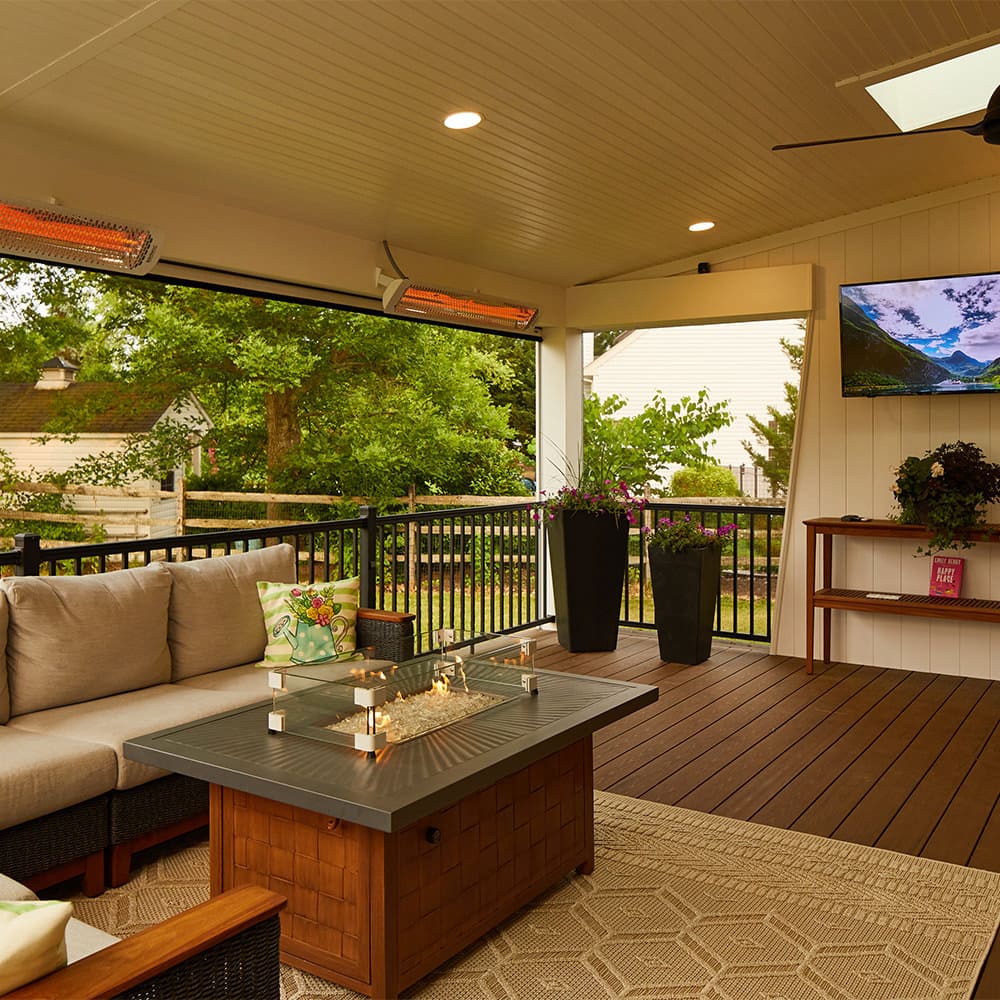
This Schwenksville, PA space boasts outdoor entertainment at its comfiest with bug protection from the Phantom Screen System, the infrared heaters, fire table, outdoor tv and dimmable mood lighting.
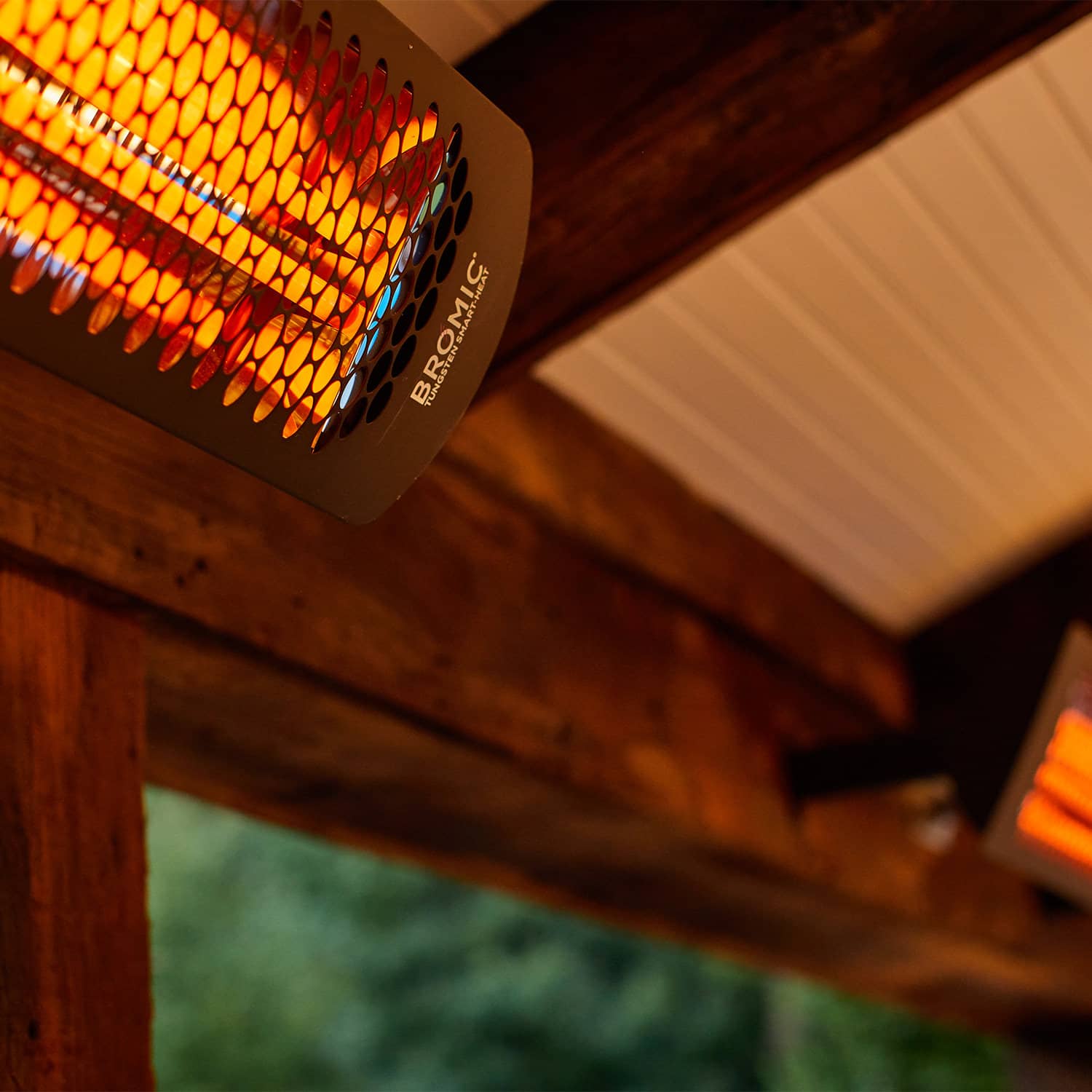
Bromic heaters are an aesthetic and effective way to heat outdoor living spaces, gaining 2 extra months in the spring and fall for comfortable outdoor enjoyment
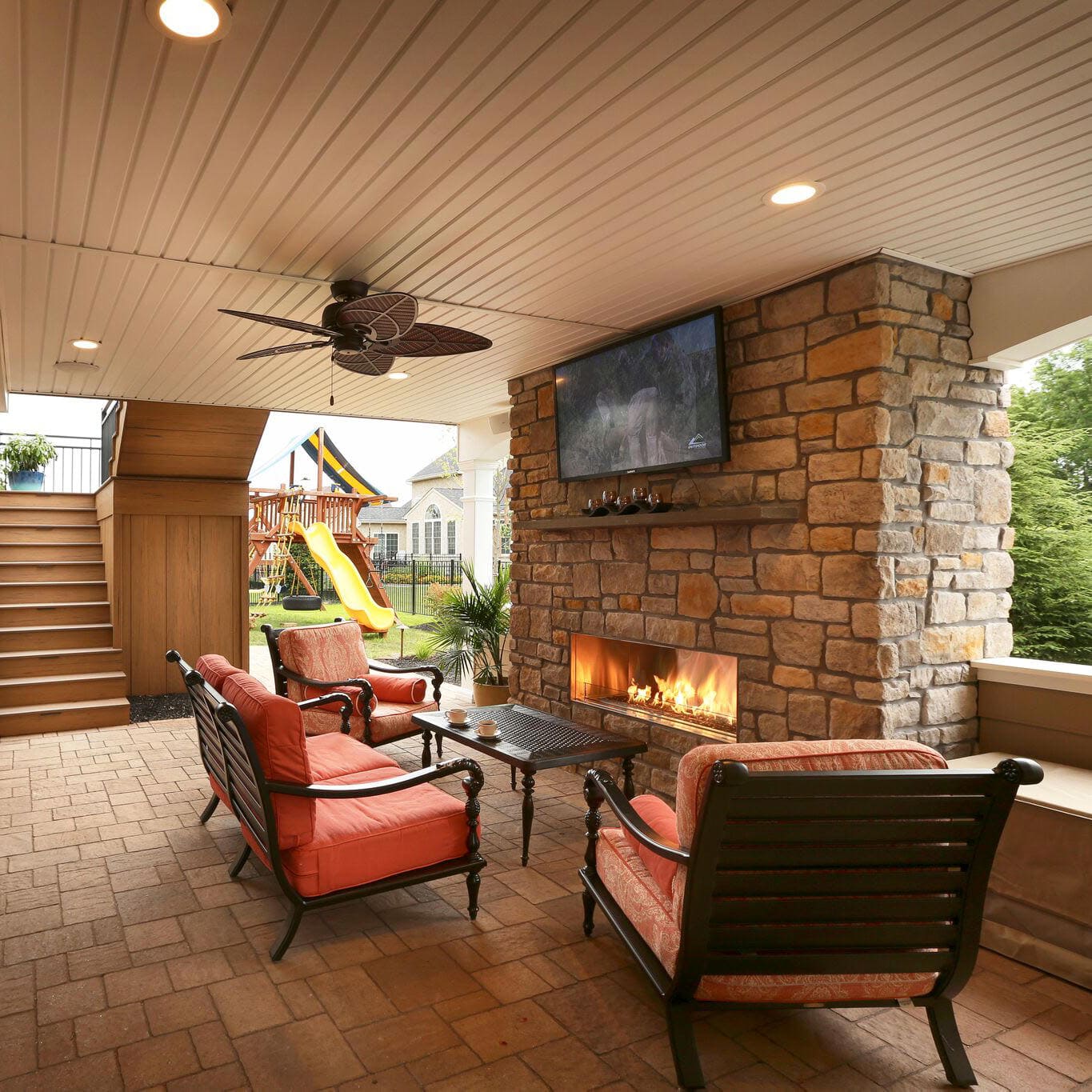
Dry under-deck systems provide added lounge and entertainment areas to your outdoor living plan. Read more about this Limerick, PA project!

Your favorite vacation spot, right outside your door is truly possible with MasterPLAN!
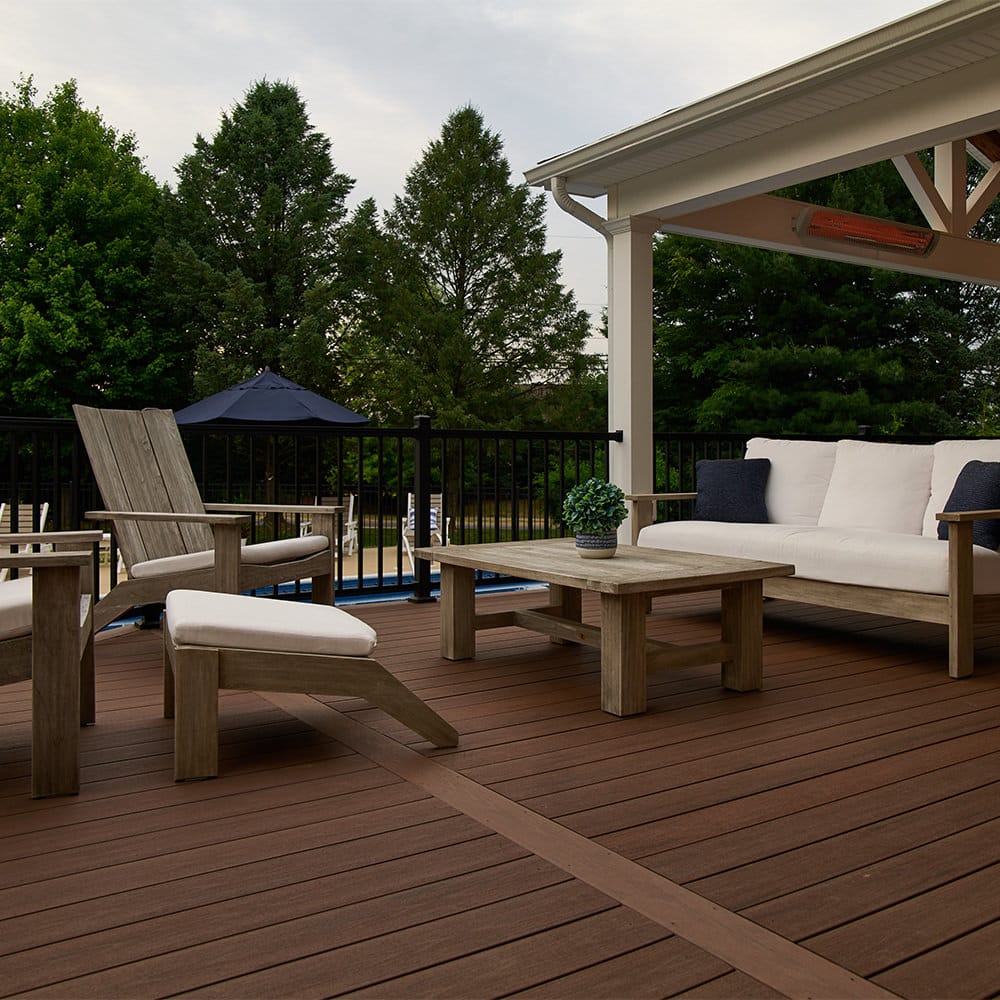
This open-air lounge space allows this family to relax under the stars and catch up on each other’s day. Pure bliss!
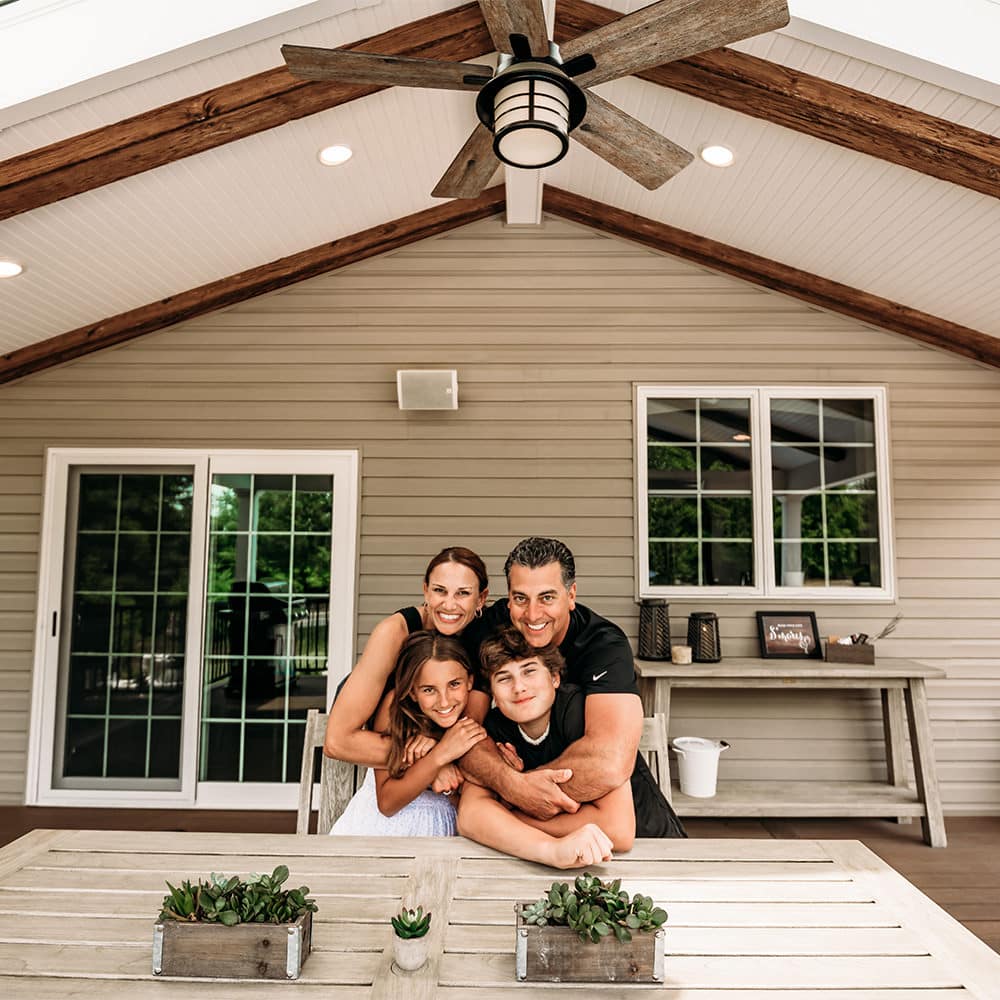
We are not sure this family’s smiles and spirits could get any brighter! Working with amazing people like this is what it’s all about!
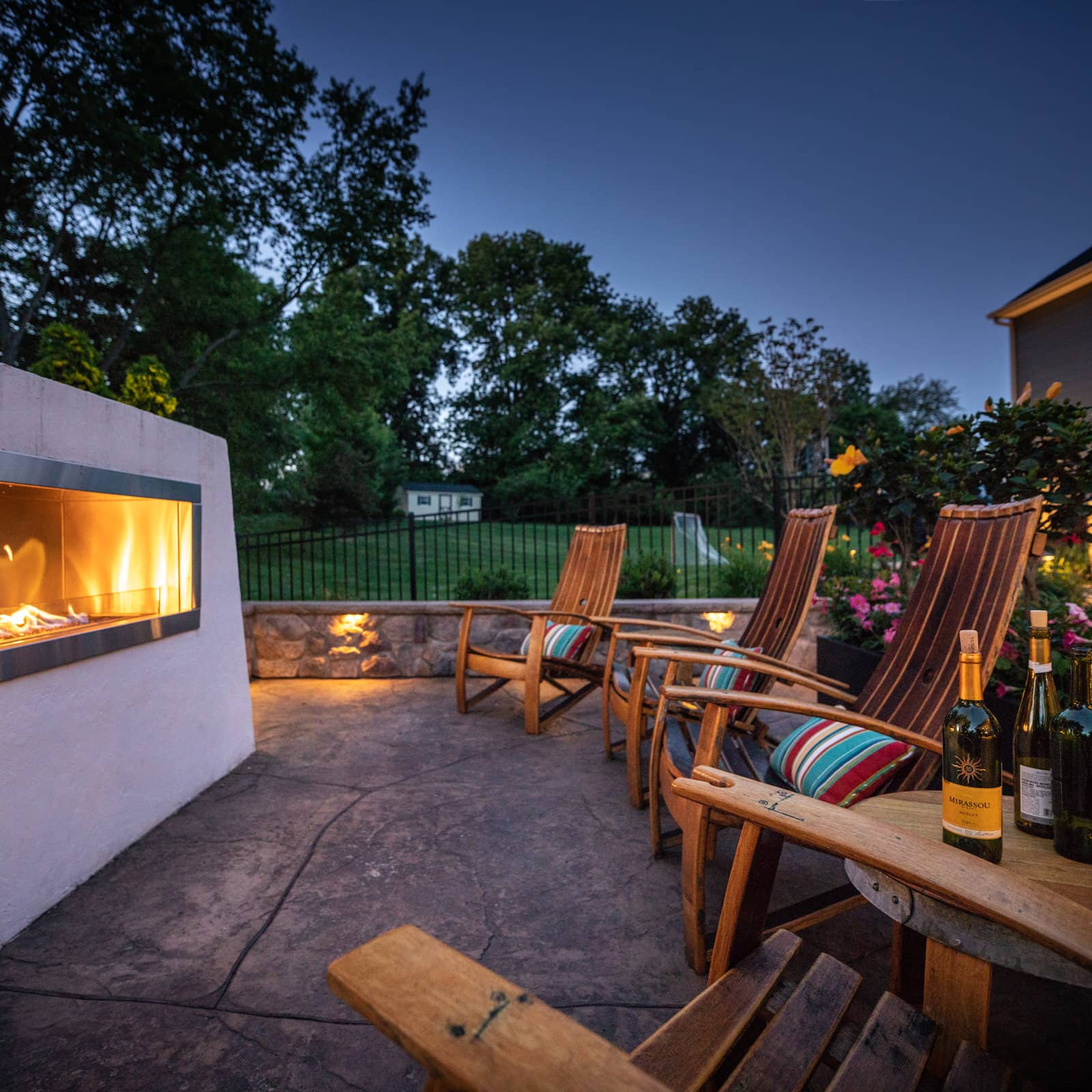
Chilly evenings have never felt so cozy and relaxing! This custom fireplace is a favorite backyard destination for this Royersford family.

Our Furniture First Philosophy ensures your outdoor living space is sized appropriately, not too big or too small...just the right size for your furniture and your enjoyment!





